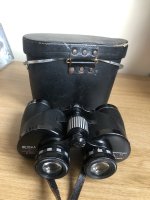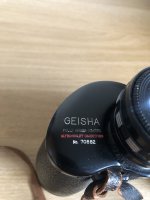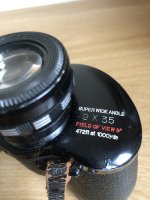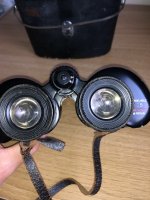Baconstrips
New member

I’ve found a pair of Geisha Binoculars while clearing out my house, they have been passed down from my Dad, and from his Aunt before that. I’ll attach some photos, I was hoping to find some more information about these as currently all I know is that they are Japanese (the name kind of gives it away)
Any information or insight you have would be appreciated, such as age or if they are a collectors item.
I’m completely new to this, and know nothing about binoculars so apologies for my ignorance!





Any information or insight you have would be appreciated, such as age or if they are a collectors item.
I’m completely new to this, and know nothing about binoculars so apologies for my ignorance!









